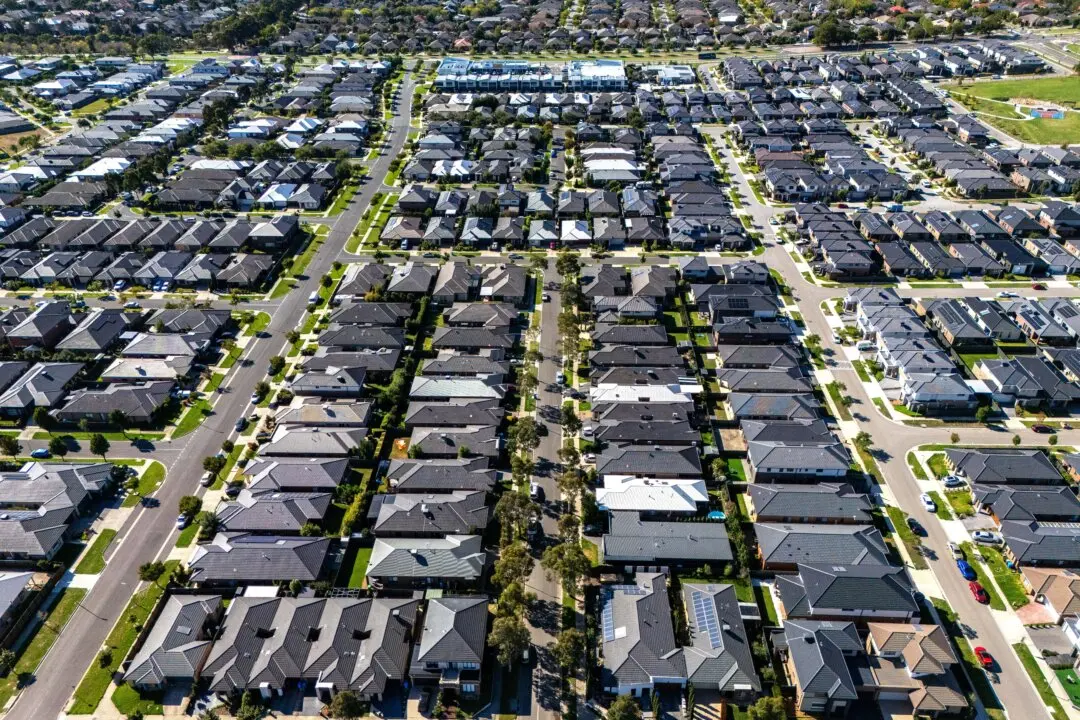Australia’s housing crisis has hit new highs, with one in three homes now worth over $1 million (US$643,000), and four major cities ranked among the world’s most unaffordable.
Two separate reports released on May 16 reveal the depth of the country’s housing crisis.
New research from Cotality (formerly CoreLogic) shows that over 34 percent of homes across Australia were now valued above $1 million.
Just a decade ago, in April 2015, that figure was only 10 percent.
Eliza Owen, head of research at Cotality, said the million-dollar mark is becoming “increasingly standard,” especially after median home values for most capital cities crossed that mark last year.
“But all of this sort of research points to the same thing, which is how unaffordable the Australian housing market is, Sydney in particular … It’s pretty grim,” she said.
Even with $1 million, Owen noted, the quality and location of available properties are deteriorating.
“If you can afford these properties, you’ve got a very high income, you’ve sold another property well, or you have wealth from your family. You need that big pool of wealth to participate in the market, and it’s locking out those that don’t.”

Four Aussie Cities Among World’s Least Affordable
The Demographia International Housing Affordability survey by Chapman University ranks four Australian cities among the 15 most unaffordable in the world.Sydney was ranked second globally, behind only Hong Kong. Melbourne, Adelaide, and Brisbane also made the top 10.
Perth narrowly missed out, with a median multiple of 8.3—just shy of the “impossibly unaffordable” threshold of 9.0 used in the study.
The report measures affordability by comparing median house prices to median household incomes. A ratio of 3.0 or lower is considered affordable. None of the 95 cities surveyed met that standard.
“Sydney has had the first-, second- or third-least affordable housing of any major market in 16 of the last 17 years,” the report said. “It’s remarkable that Australian markets, including Melbourne and Brisbane, are now less affordable than cities like New York, London, or Chicago.”

Wages Stagnate as Prices Climb
Owen attributed the crisis to runaway property values and stagnant wages—particularly following the pandemic-era housing boom that spread price inflation beyond capital cities to regional centres.“You need that big pool of wealth to participate in the market, and it’s locking out those that don’t,” Owen warned.
The lack of affordable housing options has also strained social services. Public housing stock has steadily declined, while waitlists have ballooned.
Planning Laws and Urban Containment Under Fire
The Demographia report points to restrictive urban planning policies—particularly “urban containment” rules—as a root cause of the crisis.These rules limit land supply for development, forcing prices upward and pricing out average households.
Over the last 50 years, the report said, these policies have made it harder for the middle class to own a home.
“Given the primacy of housing costs in household budgets, this also means that these stronger policies have been associated with greater overall poverty,” it stated.
New Zealand Offers Reform Blueprint
The report highlights New Zealand’s “Going for Housing Growth” policy as a potential model.Grim Outlook Without Urgent Reform
Without serious reform, the report warns, home prices will remain out of reach for millions. Major cities risk losing residents to more affordable regions or countries, weakening their economic pull and further fracturing the housing landscape.Some states, including Victoria and New South Wales, have begun encouraging higher-density development near transport hubs. But whether these plans will be implemented swiftly enough to change the trajectory remains to be seen.







